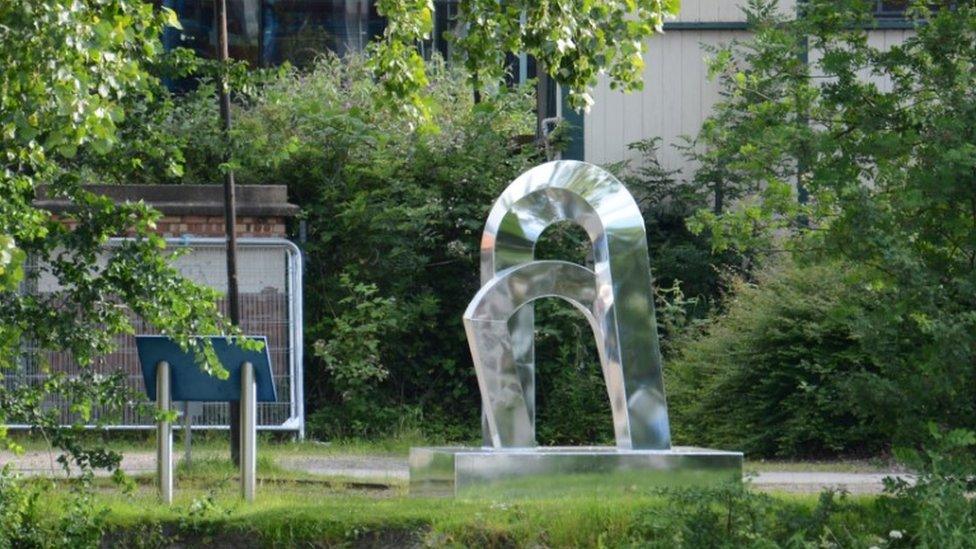George Boole: Statue to Victorian coder unveiled in Lincoln
- Published

The bronze artwork depicts a larger than life-size Boole teaching a boy and girl at a blackboard
A statue honouring a Victorian mathematician whose work is in every computer and smartphone has been unveiled.
George Boole, who was born in Lincoln in 1815, invented Boolean logic, a system of AND, OR or NOT statements.
The bronze artwork, at the city's railway station, was proposed in 2017
The design, by sculptor Antony Dufort, was funded in part by the Heslam Trust which said the mathematician should be "remembered with pride".
In a statement it said: "The contribution George Boole made to computer science has been recognised globally by naming a crater on the moon after him.
"It was acknowledged by Alan Turing at Bletchley Park during World War Two that Boolean logic led them to the design of the computer which eventually broke the Enigma code and is estimated to have shortened the war by two years."
Other Lincoln sites already commemorate the mathematician; a Boole memorial window in the cathedral, a plaque on his Pottergate house and a mention on an obelisk to city greats in St Marks.
Boole, dubbed the grandfather of the digital age, had a notion of the impact his work could have.
He told a friend in 1851 that his creation could be "the most valuable, if not the only valuable, contribution that I have made or am likely to make to science and the thing by which I would desire if at all to be remembered hereafter".

Follow BBC East Yorkshire and Lincolnshire on Facebook, external, Twitter, external, and Instagram, external. Send your story ideas to yorkslincs.news@bbc.co.uk, external.
- Published8 July 2016

- Published8 December 2014
